Volnay, 1er Cru Santenots
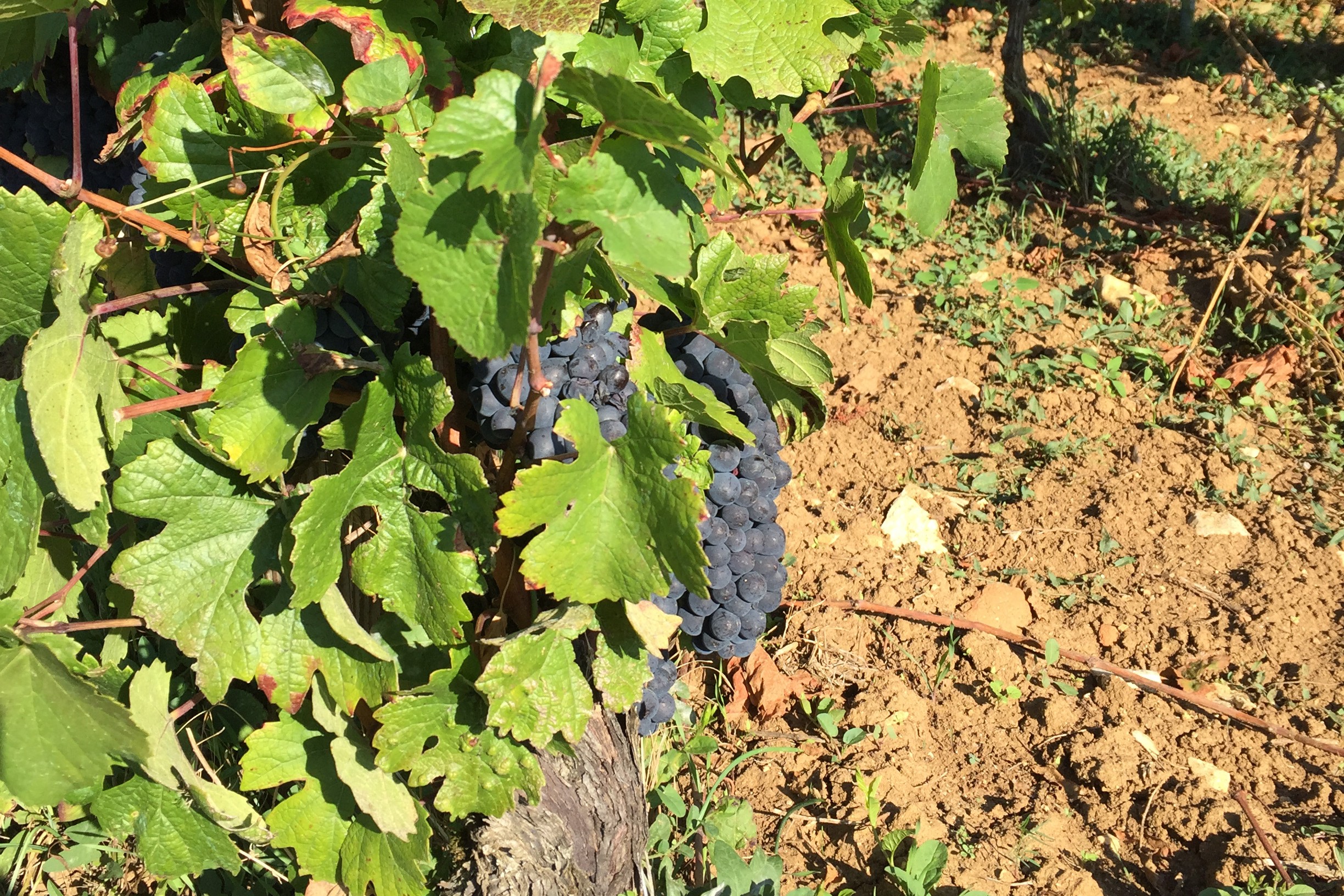
Terroir
Santenots has always been a highly regarded premier cru in Volnay, although it actually lies in the commune of Meursault. There is plentiful clay in this large vineyard making it more suitable for red wine and a rather fulsome, velvet red wine to boot, hence its inclusion within Volnay. The high iron content is evident in the red colour of the clay. Here the bedrock is Bathonian limestone, harder than that in En Chevret & Champans. There are plenty of small stones in the top soil with larger stones in the section from which my fruit came in 2018. I selected fruit from the area at the top and on the Volnay side of the domaine’s parcel as wanted the firmness, freshness, tension and slight austerity from the limestone. It is below and adjoining Santenots de Milieu and there is a greater percentage of rock mixed with clay.
The parcel I used in 2018 is easily differentiated from the sandier soil, a light silty downwash, a few metres to the south (and the heavier clay from the section lower down which makes less interesting wine). In 2019 I decided to take half my fruit from the rockier part and half from the old vines on the siltier soil. Both are on a slight slope assisting with drainage, but it was lack of rain which was of issue in 2019 and the older vines on the lighter soil fared better than those on more limestone. The silky, fluid expression of the 2019 wine is a combination of the warm vintage and the two soil types.
Santenots was first mentioned in 1218 as 2 ouvrées were included in a package of Meursault handed over to Citeaux by the Abbey de Tart.
Domaine
The fruit comes from Nicolas Rossignol. It is easy to spot Nico’s vineyards from the high and healthy canopies, which grandfather initially encouraged him to grow. In this film Nico explains.
He works with the lunar calendar for pruning, racking and bottling, but has a pragmatic approach to bio-dynamics, taking that which works for him. The vineyard management is a labour of love. The soil is lightly ploughed. The focus is on the life and energy of the soils and the vines. There is more about the domaine under Chevret.
Santenots is a large vineyard with a total surface area of 29 hectares of which Nico has two. He divides his vineyard into three sections based on the soil type. Each is vinified separately and then blended for barrel ageing. The top half on the Volnay side is stonier, closer to the bedrock, making tight, mineral and vigorous Santenots. As the soil becomes sandier towards Meursault the older vines in this section make supple, elegant and more refined, lighter wine. The bottom, with more clay, is typical Santenots Bas, softer and richer.
I followed the separate cuvées in 2017, tasting during vintage with Nico and his team. It was an easy choice. Never-the-less I walked through the vineyard looking at the grapes and the soil on the morning of the harvest in 2018 and chose the fruit on the rocky part, where the ‘ship heads’ protrude through the soil.
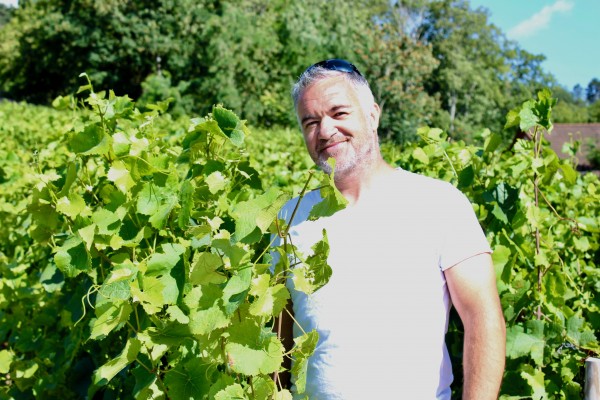
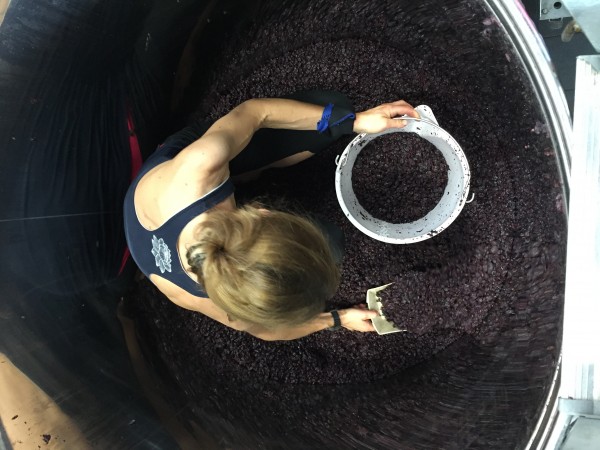
In the Winery
2018: The fruit from the stonier part needs very careful handing, not to become too austere. I decided to use 35% whole bunch to give the wine some floral complexity but also the freshness, a minty lift that whole bunch contributes, which is helpful in a warm vintage. I put them at the bottom of the small 1000l tank, which I enveloped in an insulation blanket. It only just contained the grapes for my three barrels. I simply kept the cap rinsed for the first 5 days or so taking juice from the tap at the bottom in a bucket to tip over the cap, while waiting for it to slowly increase in temperature. It had a remontage and a light pigeage on the eighth day and a pigeage on the 9th day. With one further pigeage, just standing on the fruit and mixing it gently with my feet, that was all the extraction it received. I tasted each day, but there was plentiful, body and tannin. It was in the vat for 20 days, as it took its time to ferment. Many in the Côte de Beaune found this vintage slow to ferment , and this is exacerbated when working with small volumes, which are harder to keep warm. It matured in Francois Frères and Seguin Moreau barrels, second and third fill, and was bottled in spring 2020. I made three barrels.
2019: This was 100% de-stemmed and had a cold soak for 7 days. I did one rack and return to get the fermentation going and just two pigeage, carefully standing on top of the fruit. That’s it. It had 16 days in the vat. The aim was to strike a balance between the elegance of the old vines from the lighter soil with the freshness of the vines from more limestone. It was bottled in April 2021. I made two barrels.
Style and When to Drink
Santenots is a full-bodied, generous Volnay with velvet depth to the tannins. The clay gives the richness and sweetness. When it is joined by some limestone this makes tannins a touch stricter, but also finer… this gives the palate more definition, tension and freshness. In youth my 2018 Santenots may seem quite taut, but as it matures it begins to reflect the character of the terroir in a certain sophistication, which was apparent during the vinification, before it tightened up. It’s still Santenots, a fulsome Volnay, but with a tighter core and a touch more refinement. The 2019, which includes 50% of the old vine fruit from the adjoining lighter soil, is more fluid and silky and has the characteristic ‘sweetness’, red fruit and charm of the 2019 vintage.
Give Santenots time to mature in bottle. It would benefit from at least 6 years, at which point there will still be plentiful fruit. However it is best left longer, 8 years to shed youth for more complexity, and 10 years to 12+ to be fully mature.
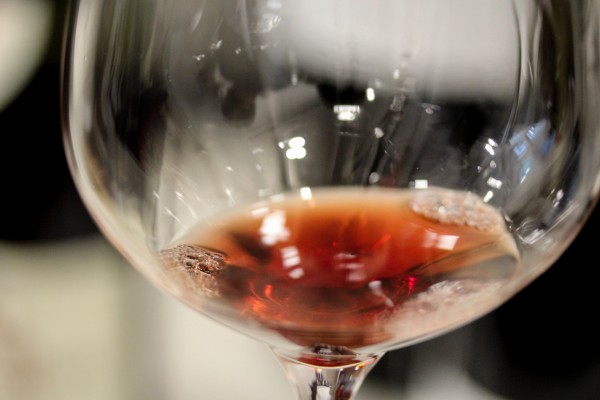
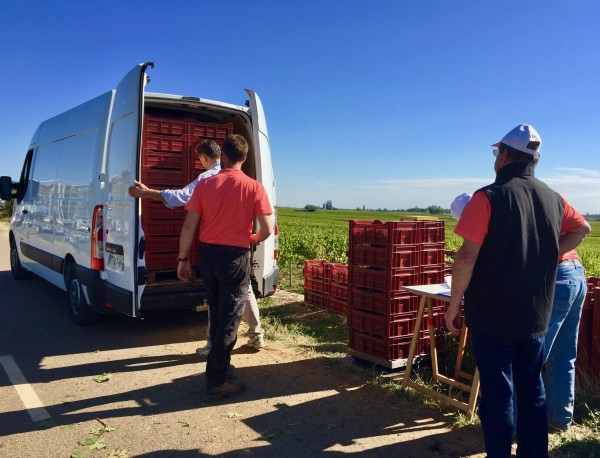
Vintages Made
2018 & 2019: In 2018 hot vintage many vineyards were becoming quite parched particularly, on stony soil, Santenots was picked on the 2nd September and had a strict sorting to remove any dried berries. The berries were small with a high skin to juice ratio, so the 2018 has plenty of structure. The heatwave has given it richness, but this is underscored with the stony minerality and freshness from the whole bunch. It’s both vigorous and restrained.
In Photo: 2018 harvest in Santenots, counting the cases as as the fruit is picked.